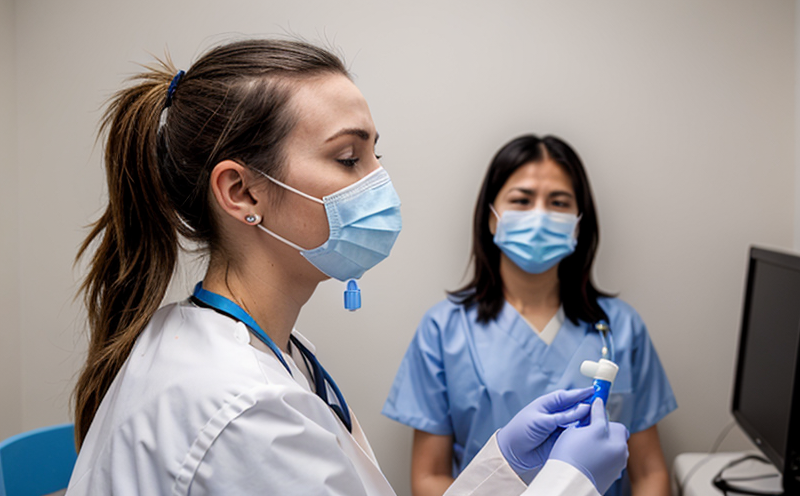Respiratory Pathogen Monitoring in Laboratory Rodents
In the context of clinical and healthcare testing, particularly within respiratory disease testing, the monitoring of pathogens in laboratory rodents is a critical aspect. This service involves the systematic surveillance to ensure that laboratory animals used for research are free from specific respiratory pathogens known to affect human health. The primary purpose is to minimize the risk of cross-contamination between experimental models and humans, thereby ensuring the integrity and validity of research outcomes.
Respiratory infections in rodents can lead to significant disruptions in studies related to drug discovery, vaccine development, and understanding disease mechanisms. This service ensures that researchers have reliable data, which is essential for advancing medical knowledge. The monitoring process involves rigorous testing protocols that adhere to international standards such as ISO 17025 and ASTM E1784.
The methodology typically includes the collection of respiratory specimens from the rodents using techniques approved by regulatory bodies like the Association for Assessment and Accreditation of Laboratory Animal Care International (AAALAC). Specimens are then analyzed using advanced laboratory methods such as polymerase chain reaction (PCR) assays, which are highly sensitive and specific in detecting pathogenic DNA or RNA.
The service also ensures compliance with ethical guidelines set by institutions like the National Institutes of Health (NIH) to minimize stress on the animals during sampling. This holistic approach not only enhances research outcomes but also upholds high ethical standards in animal care.
In summary, respiratory pathogen monitoring is a vital step in maintaining the reliability and reproducibility of laboratory-based medical research. By adhering to stringent protocols and leveraging cutting-edge technology, this service plays a crucial role in safeguarding both experimental models and public health.
Scope and Methodology
| Aspect | Description |
|---|---|
| Specimen Collection | Respiratory samples are collected from rodents using nasal swabs or bronchoalveolar lavage (BAL) techniques. |
| Sample Transport | Transported under controlled conditions to prevent contamination and maintain specimen integrity. |
| Testing Methods | Includes PCR-based assays, culture methods, and serological tests to identify specific pathogens. |
| Pathogen Identification | Testing Criteria |
|---|---|
| Bacteria | Streptococcus pneumoniae, Haemophilus influenzae, and Bordetella bronchiseptica. |
| Fungi | Candida albicans, Aspergillus fumigatus. |
| Viruses | Rhinovirus, Respiratory Syncytial Virus (RSV), Influenza virus. |
Quality and Reliability Assurance
The quality and reliability of the respiratory pathogen monitoring service are paramount. Rigorous quality control measures ensure that all tests are conducted under strict protocols, leading to accurate results. This includes regular calibration of equipment, validation of test methods, and participation in proficiency testing programs recognized by regulatory agencies.
Our laboratory maintains a robust Quality Management System (QMS) compliant with ISO 17025 standards, which guarantees that all aspects of the service are consistently performed to high standards. This system also ensures traceability of test results, allowing for transparent reporting and easy auditing by clients.
The reliability of the monitoring process is further enhanced through continuous training of staff on the latest testing techniques and best practices. Regular reviews and updates to our procedures ensure that we stay current with advancements in laboratory diagnostics and comply with evolving regulatory requirements.
In summary, quality assurance measures are integral to maintaining the integrity and accuracy of respiratory pathogen monitoring services. By adhering to these stringent protocols, we provide reliable data that is essential for robust research outcomes.
Competitive Advantage and Market Impact
- Accurate and timely identification of respiratory pathogens in laboratory rodents.
- Comprehensive testing protocols covering a wide range of potential pathogens, including bacteria, fungi, and viruses.
- State-of-the-art facilities equipped with the latest diagnostic tools for precise pathogen detection.
- Collaborations with leading research institutions to ensure alignment with industry standards.
- Dedicated customer support team available 24/7 to address any concerns or queries promptly.





